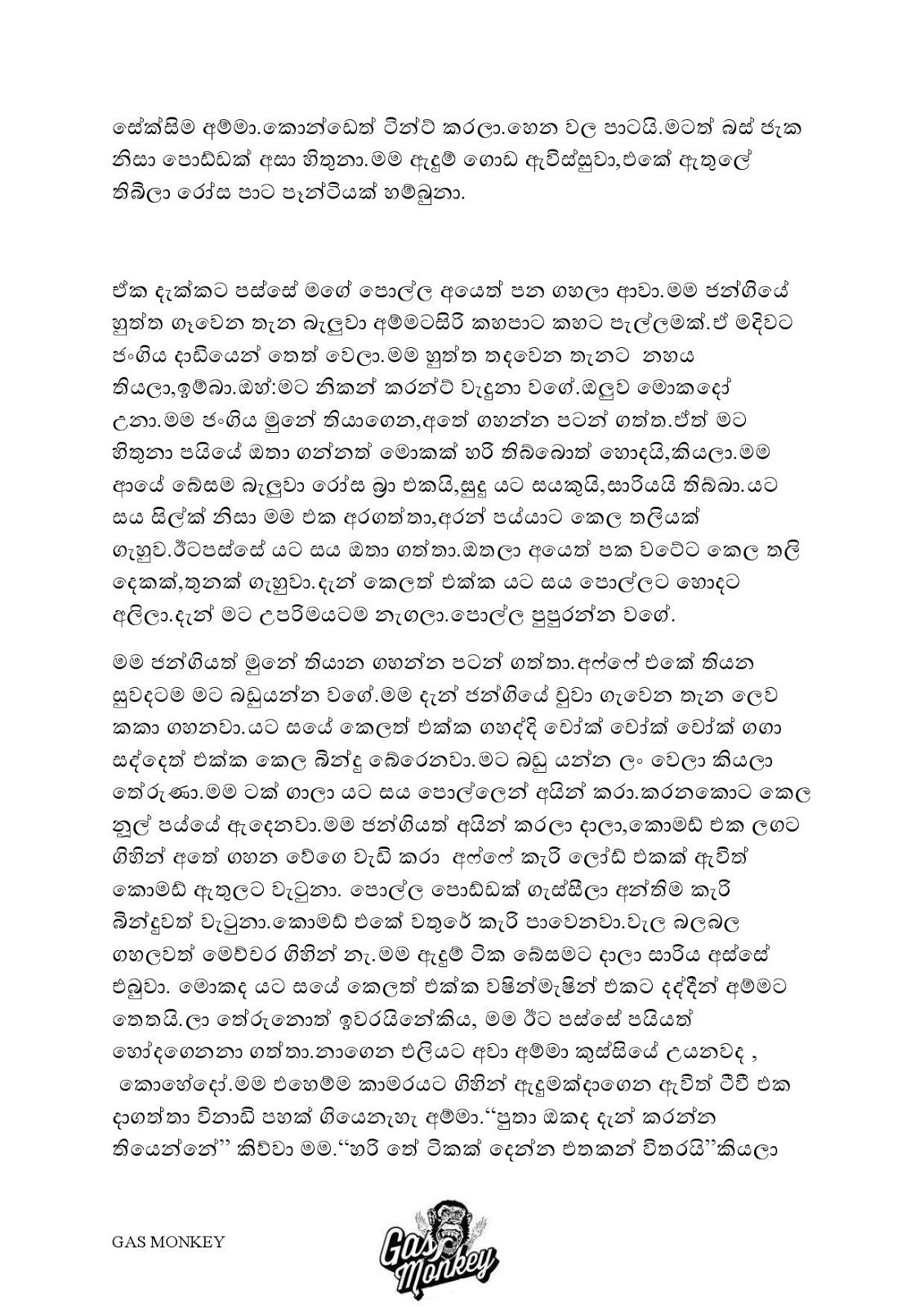Sinhala wal katha are not just stories; they are a vivid tapestry of Sri Lankan culture, folklore, and tradition that has been passed down through generations. These captivating tales often blend elements of history, mythology, and moral lessons, making them a significant part of Sri Lanka's rich cultural heritage. In a world increasingly dominated by modern storytelling, Sinhala wal katha stands out as a unique reminder of the enduring power of oral narratives.
As you dive into the world of sinhala wal katha, you will discover a treasure trove of narratives that reflect the values, struggles, and aspirations of the Sinhala people. These stories, often narrated during family gatherings or community events, serve not only as entertainment but also as a means to instill moral values and cultural identity in listeners of all ages. The art of storytelling in Sri Lanka is a cherished tradition, and Sinhala wal katha plays an integral role in preserving this heritage.
In this article, we will explore what makes sinhala wal katha so special, the themes that recur in these tales, and their significance in contemporary Sri Lankan society. From exploring the origins of these stories to understanding their impact on modern culture, this in-depth look will help you appreciate the brilliance and richness of Sinhala storytelling.
What Are Sinhala Wal Katha?
Sinhala wal katha refers to traditional Sinhala stories that often convey moral lessons or reflect cultural traditions. These narratives can range from folk tales about mythical creatures to historical accounts of significant events and figures in Sri Lankan history. They are typically characterized by their engaging plots, colorful characters, and the incorporation of local customs and beliefs.
Why Are Sinhala Wal Katha Important?
The significance of Sinhala wal katha extends beyond mere entertainment. They are a vital part of Sri Lanka's cultural identity and serve to connect generations. Here are some reasons why these stories hold importance:
- Preservation of Culture: Sinhala wal katha help in maintaining and passing down cultural practices and values.
- Moral Lessons: Many stories include ethical teachings that guide listeners in their daily lives.
- Community Bonding: Storytelling fosters community spirit and strengthens familial ties during gatherings.
- Entertainment: These tales often entertain audiences, making them a popular choice for family activities.
What Are Some Common Themes in Sinhala Wal Katha?
The themes found in Sinhala wal katha are diverse, reflecting the multifaceted nature of Sri Lankan society. Some common themes include:
- Heroism: Stories often feature brave protagonists who overcome various challenges.
- Justice: Many narratives emphasize the importance of fairness and moral conduct.
- Nature: The relationship between humans and nature is a recurring motif.
- Family: Tales frequently explore family dynamics and the importance of kinship.
Who Are the Notable Characters in Sinhala Wal Katha?
Sinhala wal katha are populated by an array of memorable characters, including heroes, villains, and mythical beings. These characters often embody the qualities and flaws that resonate with audiences, making the stories relatable and engaging. Some notable figures include:
- Ravana: A powerful demon king from the Ramayana, often depicted with complex characteristics.
- Vijaya: The legendary prince believed to be the forefather of the Sinhalese people.
- Parakramabahu: A king celebrated for his wisdom and governance in ancient Sri Lanka.
Where Can You Find Sinhala Wal Katha?
Sinhala wal katha can be found in various forms, including:
- Books: Numerous collections of traditional tales have been published.
- Oral Tradition: Many stories are shared verbally during family gatherings and community events.
- Media: Television programs and films sometimes adapt these stories for modern audiences.
How to Appreciate and Engage with Sinhala Wal Katha?
Engaging with Sinhala wal katha can be a rewarding experience. Here are some ways to appreciate these stories:
- Listen to Storytellers: Attend local events where traditional storytellers share tales.
- Read Collections: Explore books that compile various Sinhala wal katha.
- Participate in Discussions: Join community groups that focus on storytelling and cultural exchange.
What Impact Do Sinhala Wal Katha Have on Modern Society?
In contemporary Sri Lanka, Sinhala wal katha continue to influence society in various ways. They serve as a bridge between the past and present, helping to instill cultural values in younger generations. Furthermore, these stories provide a sense of belonging and identity in an increasingly globalized world, reminding individuals of their roots and heritage.
Conclusion: Embracing the Legacy of Sinhala Wal Katha
Sinhala wal katha represent a precious aspect of Sri Lankan culture, entwining history, morality, and entertainment. As you explore the captivating world of these narratives, you will uncover the depth of wisdom and creativity they hold. By appreciating and preserving these stories, we can ensure that the legacy of Sinhala wal katha continues to thrive for future generations, enriching the cultural landscape of Sri Lanka.
You Might Also Like
Discover The Ultimate Sports Experience At Www.thesportshouse.netMuddy Cow North Branch Reviews: A Culinary Adventure Awaits
Exploring The Enigmatic World Of Denver Eros
Understanding United Medical Credit: Your Path To Affordable Healthcare Financing
Experience The Thrill Of Immersive Gamebox Houston
Article Recommendations
- Julie Bowen Boyfriend
- Martina Benoit
- Sophierain Nudes
- Jamerrill Stewart News
- Hdhub4
- Sohh Hip Hop
- Jameliz S
- Val Kilmer Topgun
- Corey Harrison
- Prince Harry Children 2024


